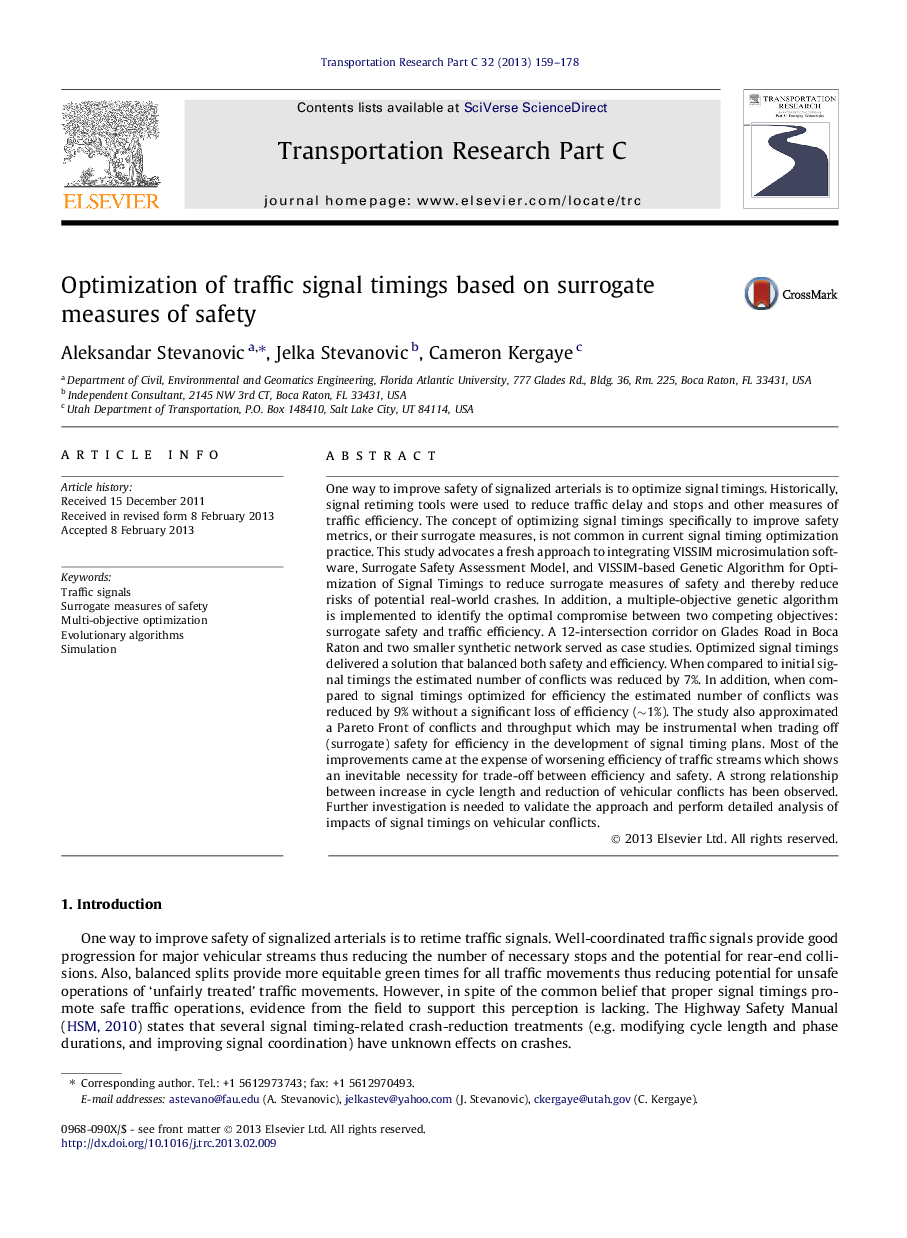| Article ID | Journal | Published Year | Pages | File Type |
|---|---|---|---|---|
| 524956 | Transportation Research Part C: Emerging Technologies | 2013 | 20 Pages |
One way to improve safety of signalized arterials is to optimize signal timings. Historically, signal retiming tools were used to reduce traffic delay and stops and other measures of traffic efficiency. The concept of optimizing signal timings specifically to improve safety metrics, or their surrogate measures, is not common in current signal timing optimization practice. This study advocates a fresh approach to integrating VISSIM microsimulation software, Surrogate Safety Assessment Model, and VISSIM-based Genetic Algorithm for Optimization of Signal Timings to reduce surrogate measures of safety and thereby reduce risks of potential real-world crashes. In addition, a multiple-objective genetic algorithm is implemented to identify the optimal compromise between two competing objectives: surrogate safety and traffic efficiency. A 12-intersection corridor on Glades Road in Boca Raton and two smaller synthetic network served as case studies. Optimized signal timings delivered a solution that balanced both safety and efficiency. When compared to initial signal timings the estimated number of conflicts was reduced by 7%. In addition, when compared to signal timings optimized for efficiency the estimated number of conflicts was reduced by 9% without a significant loss of efficiency (∼1%). The study also approximated a Pareto Front of conflicts and throughput which may be instrumental when trading off (surrogate) safety for efficiency in the development of signal timing plans. Most of the improvements came at the expense of worsening efficiency of traffic streams which shows an inevitable necessity for trade-off between efficiency and safety. A strong relationship between increase in cycle length and reduction of vehicular conflicts has been observed. Further investigation is needed to validate the approach and perform detailed analysis of impacts of signal timings on vehicular conflicts.
• We optimize traffic signal timings to reduce number of traffic conflicts. • We integrate traffic simulation, optimization, and safety estimation tools. • We perform multiple optimizations and analyze impact of signal timings on conflicts. • Signal timings should be balanced between safe and efficient traffic conditions. • Increased green time reduces conflicts but causes longer waiting times.
